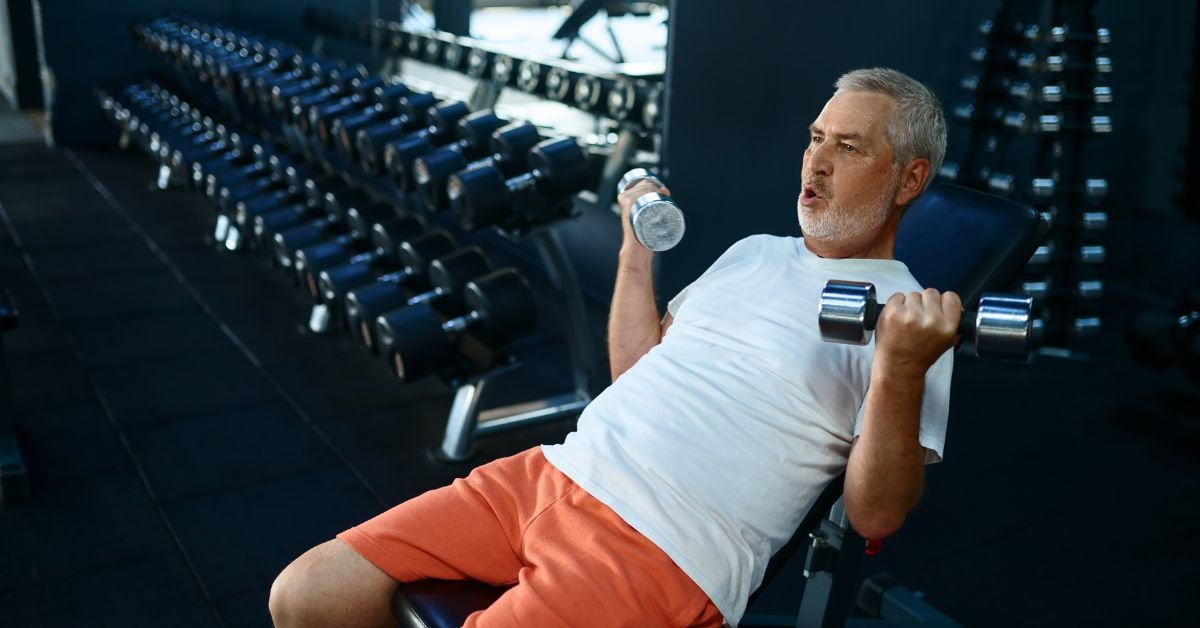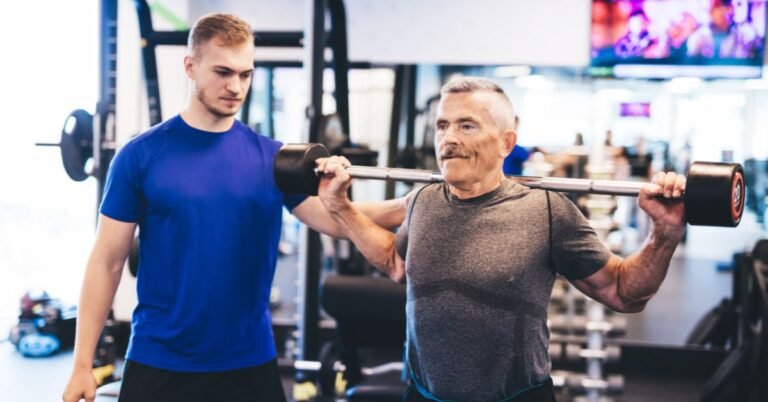Like it or not, a number of changes happen to our bodies as we age. They are a natural part of living life and include a combination of age-related structural, biochemical and physiological changes. Some of these changes are inevitable, however how we live our lives, including how much activity and exercise we do, has a huge influence on the speed and extent of these changes.
We all know exercise is good for us and has lots of benefits to our health. Perhaps less well known are the benefits of strength training (resistance training), which are fortunately now becoming more widely researched and promoted.
Perhaps even less well known are the benefits of strength training specifically for older adults. Strength training has multiple health and lifestyle benefits for older adults. So much so that in our opinion, it should be a mandatory prescription from your doctor. Let’s explore why…
What we’ll cover:
What happens to our bodies when we age?
- We lose muscle mass & muscle strength (sarcopenia)
- We lose bone density (osteopenia)
- The heart and blood vessels thicken making it harder to pump around a sufficient amount of oxygen and glucose to our cells
- Our kidneys don’t function as well to carefully concentrate our urine and keep the levels of electrolytes and chemicals in our blood at an optimum level
- Our ability to metabolise glucose effectively reduces and we start to carry more body fat
- We lose brain mass and the speedy connections which send messages between cells start to slow down
All of the changes above can have huge consequences. Some are inevitable with ageing, others have environmental and genetic risk factors which also play a role. The changes in our muscles and bones cause slowing down, aches and pains, making performing our normal daily activities such as walking, climbing stairs and household tasks more difficult.
It also puts you at an increased risk of falling over, and of serious injury such as fractures if you do. Ultimately, older adults with low muscle mass and bone density are at a higher risk of a poor quality of life, loss of independence and even an earlier death.1
The levels of muscle mass and strength loss varies in different people. Generally we are at our peak maximum physical capacity between 20-30 years old. Our muscle mass then starts to gradually decline until we are about 50 years old, after which the decline starts to happen more rapidly.
Studies have shown that strength loss can occur as fast as 15% per decade after our 50s.2 Though, the level of loss and rate of decline varies in different people because of a variety of factors including lifestyle, genetics and the presence of other conditions or diseases.
Hearing all of this can sound very scary. It can make the changes happening to our bodies in ageing seem beyond our control. But that’s far from the truth.
The power of strength training
Not all of the changes listed above are inevitable with ageing. There is evidence to show that a large amount of the decline in muscle strength seen in ageing is due to inactivity and disuse.3 A number of other studies now show that these changes can actually be reversed too.
We therefore can take ownership and control of our bodies in ageing. We can slow these changes down, we can reduce the loss of muscle and bone density and even improve it as we age.
Unfortunately, there is no magic medication, but there is something you can do in exercise and, more specifically, strength training. It just involves a little more effort than taking a pill every morning. That being said, strength training can also actually be more enjoyable and has many more benefits than just improving your muscle mass or bone density.
What are the benefits of strength training for older adults?
There is very clear evidence for the benefits of strength training in older adults to improve muscle strength, mass and functioning, as well as increase bone density. Strength training induces muscle hypertrophy (growth), improves muscle mass and increases muscle strength.
It makes your muscles stronger, more powerful and keeps them doing their very important job in allowing you to do all the functional things you want to do in your life. Whether that be walking around pain free to go to the shops and see friends, looking after your children and grandchildren, going on long bikes rides and country walks, playing sports or even running marathons.
There is a growing body of evidence demonstrating the significant benefits of strength training for all age groups (improved muscle and bone health, improved body composition and fat loss, prevention of a huge number of chronic and preventable diseases, improved energy levels and mood). These benefits are increasingly important as we age.
Performed regularly, 2 or 3 times a week, strength training specifically in older adults has been shown to:
- Increase muscle mass
- Improve strength
- Increase bone density
- Improve quality of life
- Improve functional abilities
- Increase levels independence
- Reduce the risk of a number of age-related diseases (osteoporosis, heart disease, arthritis, type 2 diabetes)
- Improve sleep quality
- Decrease levels of depression and anxiety
The list goes on and on… so the real question is, when are you going to get started?
Starting strength training as an older adult can sound like a scary prospect, but it doesn’t have to be. You don’t need to do it at the gym with heavy weights (though you absolutely can do), it can be something carried out in your home with little or no equipment. Try our free 6 week beginners programme, browse our website to learn more, or get in touch for personalised 1:1 coaching.
Learn more: The Ultimate Guide to Strength Training For Older Adults
References
- Sharples, A. P., Hughes, D. C., Deane, C. S., Saini, A., Selman, C., & Stewart, C. E. (2015). Longevity and skeletal muscle mass: the role of IGF signalling, the sirtuins, dietary restriction and protein intake. Aging cell, 14(4), 511–523. https://doi.org/10.1111/acel.12342
- Keller, K., & Engelhardt, M. (2014). Strength and muscle mass loss with aging process. Age and strength loss. Muscles, ligaments and tendons journal, 3(4), 346–350.
- Bell, K. E., von Allmen, M. T., Devries, M. C., & Phillips, S. M. (2016). Muscle Disuse as a Pivotal Problem in Sarcopenia-related Muscle Loss and Dysfunction. The Journal of frailty & aging, 5(1), 33–41. https://doi.org/10.14283/jfa.2016.78




